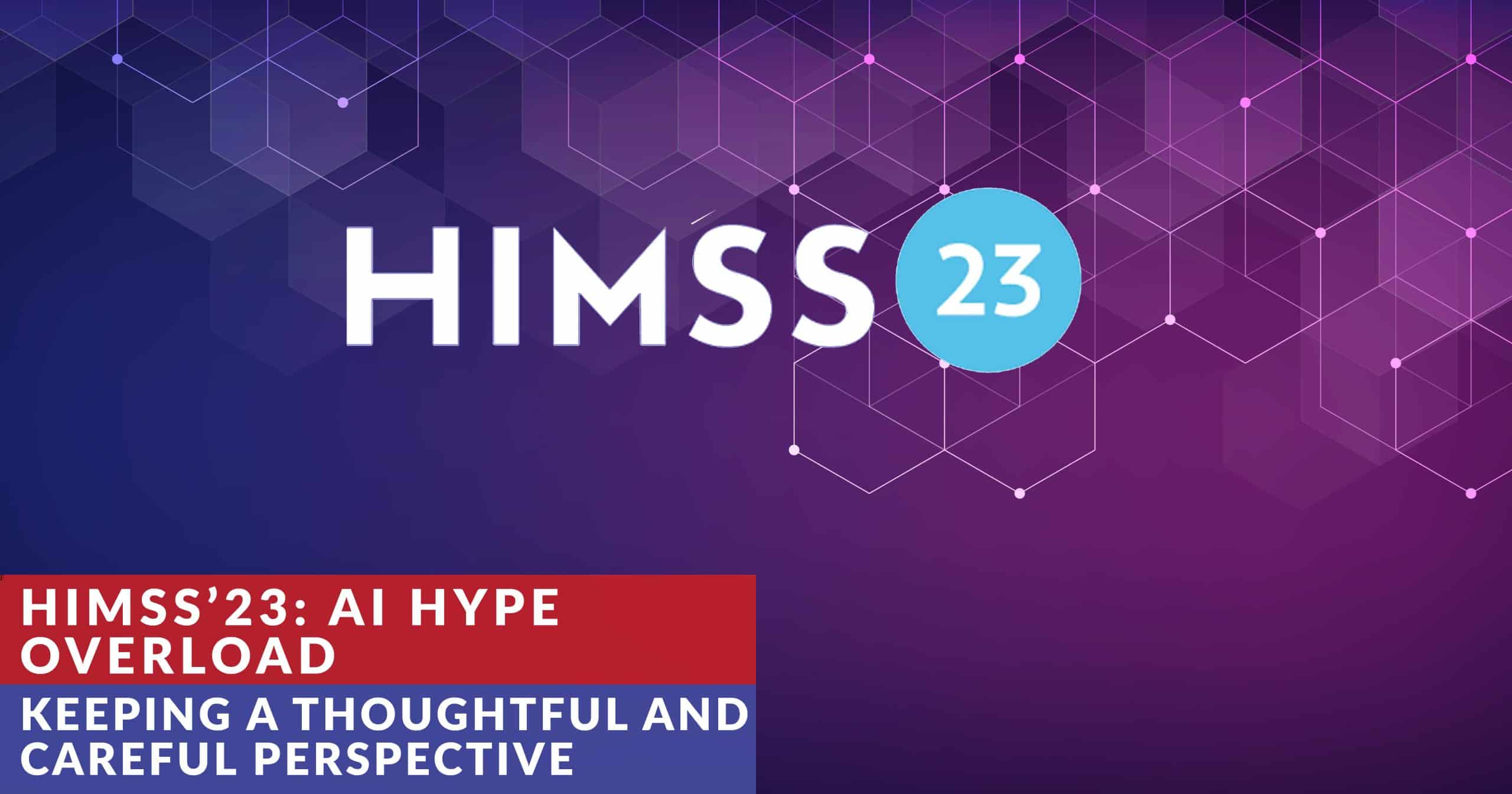If it is one thing that the healthcare IT industry doesn’t lack, it is innovation – or it least innovation on the edges. A quick search on Google for health IT innovation challenges will serve you up over 23K hits. From Sanofi, to HHS, to Cigna and other stakeholders, there seems to be no lack of challenges, code-a-thons and the like but one has to wonder, do the results of any of these challenges actually end up in the hands of consumers and/or clinicians? If yes, and I have my doubts, the number that actually make it over that last threshold is exceedingly small.
That’s not to say these challenge grants do not serve a purpose. Such challenges do attract young developers into the healthcare sector where they can apply their well-honed skills to solve a problem. Maybe it will never be a commercial success, but it does expose them to the market, the needs therein and maybe they’ll stick around by joining one of the many HIT companies.
Beyond these challenges though, larger healthcare organizations (HCO) have their own internal centers of innovation. A couple of weeks back I had the opportunity to participate in a workshop at Kaiser-Permanente’s Garfield Innovation Center where 22 innovation center leaders gathered together to share their successes, challenges, best practices and ultimately forge relationships for the future. This event was organized by BluePrint Healthcare IT, of which I am on the Advisory Board.
Participating in a number of breakout sessions and conversing with various leaders of these innovation center leaders I came to the conclusion that the greatest impact these centers could have on their respective organizations was to all join together to identify and measure lost opportunity costs that are the result of poor or insufficient interoperability across systems.
The healthcare industry remains a cottage industry with even the largest HCOs, such a Kaiser-Permanente or Partners Healthcare not having enough clout to drive interoperability across systems, be they hardware or software. If innovation centers were to rally together, develop a clear and consistent set of metrics to measure lost opportunity costs, in aggregate, they may be able to start driving change that will lead to more open systems.
Yes, it is a tall order and will require strong leadership but frankly, this industry is long overdue for tackling this issue. In the manufacturing sector, this challenge was address over a decade ago with the creation of the HART standard for device interoperability. Continua Health Alliance is trying to do something similar but still has a long ways to go. Won’t even begin talking about interoperability across disparate IT systems.
Yes, there seems to be some movement, but it is almost entirely regulatory-driven. What will it take for this industry to wake up and actually do something? Hard to say, but I would place my bets on these innovation centers, if they heed the call to collectively define metrics, to be very influential in the future.
Note: As of midnight in Cambridge on December 4th we will be closing down the ability for one to leave comments on posts. This will continue till Dec 20th. The reason? We will be launching a completely new website that will have a lot of cool features that will make it easier for you to get to know Chilmark Research, engage with us and of course continue to receive our thoughts and view on trends in the HIT sector. Stay tuned.




Maybe what I said a year ago fit the bill “Innovation without collaboration is fouling up the US Healthcare system”…as we certainly have enough creativity but does it have “real” value. Sure there’s enough being written out there today with multitudes of apps and some of this you have to feel is written to
see what sticks to the wall and the rest falls away into lala land. I said that about some of these incubators and accelerators…and added since insurance companies sponsor so much of this too, it’s a place for them to shop for “cheap” code with buying some of the lala land tech that doesn’t make it in prime time. Don’t laugh on that though as had two doctors write to me for advice on how to write cheap code to sell to insurers after I posted the article.
http://ducknetweb.blogspot.com/2012/10/new-york-digital-health.html
Another post where I took a forum video post from ZDnet really kind of drove some of these points home and the gal from T-Mobile hit the nail on the head as they were discussing big data and finding data, and that is key today as what data are we matching and where’s the value. Every data base can’t be related to any other for value for sure but there’s some of that going on to see if it sticks to the wall and then it may get marketed but when you combine credible data with non credible data and plan to sell and market it as an valuable analytics service for sale, you better be sure on your value as just may not be there. Again the gal from T-Mobile looked in house at what they were doing and said some of their own stuff in this area was “silly”…spot on.
http://ducknetweb.blogspot.com/2012/11/big-dataanalytics-if-used-out-of.html
That is why a year ago I started my series called the Attack of the Killer Algorithms as the amount of flawed data, again the result of trying to relate data to other data that really is not relatable hurts consumers when such software designed for profit rather than accuracy hits the market. Don’t get me wrong there’s a lot of good stuff out there too and I’m happy for that but sometimes it gets very gray. On the left hand side of my blog, there’s some very good videos to watch that talk about this in different aspects and the one by Charlie Siefe “It’s all about Context” is very good and there’s some humor in there as well but he’s from NYU and knows math and P Values. I love when he debunks a study about brain waves and they used a fish, problem with the study was “the fish was dead”..he does a real good job with addressing how numbers and formulas are used the the lecture was given at Google NY offices earlier this year. He wrote a a great article about pharma abuse in Scientific American last week that myself, Reuters and Forbes were all over, and he had to sue HHS/NIH to get the “so called public” information he needed so things are rough all the way around:)
Wall Street Journal had an article too about big data and basically was asking the question as to why is everyone stumbling with it,big companies, and again it comes back to context and “real” value. It takes time and and as it is complex out there today I keep telling folks that the “short order code kitchen burned down several years ago and everyone missed the fire sale”, in other words developers and programmers can whip things out like they used to as we are dependent on platforms and other APIs today (someone else’s code) and it all needs to work together and therefore more time is needed all the way around to write it.
Medical software is the only aspect of medicine that is secret and inaccessible to peer review, physician improvement and teaching. Medical software stands out as the subject of physician frustration, heavy-handed government intervention and, as last week’s WSJ article ( http://on.wsj.com/Ww6i5X ) shows, privacy issues.
Does the current practice of proprietary medical software serve either investors or innovators? The first $10 B of the $29 B in federal incentives has certainly achieved the goal of physician adoption but, it has done so at the cost of increased vendor lock-in, incumbent consolidation, and it introduced expensive certification requirements that are a barrier to market entrants and completely incompatible with community-based open source software projects.
Our policy makers still holds two trump cards: (1) Most of the federal incentive money is still subject to Stage 2 and Stage 3 mandates. Let’s hope these mandates favor open source software, physician collaboration, patient access to their own data and the patient’s right to easily transmit our data to the agents and services and software that we choose; (2) The federal health system, the families of service members and veterans, is now building a second-generation integrated electronic health record as open source software with unparalleled attention to usability, patient engagement, and privacy.
Federal grants such as Indivo and SMArt and public private collaborations such as Direct Project and Blue Button are great examples of innovation in medical software and collaboration that remain inaccessible to individual physicians and patients outside of the federal sector as the medical software industry feasts on the vendor lock-in business model they have been allowed to create.
Interop is the last mile in making “meaningful use” truly meaningful and useful.
With the advent of HITECH, and its subsequent tie-in to stimulus payments under ARRA/PPACA, there was a land-rush to develop EHR tech that gave lip service to making the data created within those systems accessible across the healthcare system. It’s remained lip service only, as the 800+ EHR vendors have created their own little data silos with no way to strap them together.
There are countless committees herding cats to start to commence to begin to build health information exchanges. There are a few companies who are actually *doing* it.
However, as Adrian points out, vendor lock-in is still the rule of the road in health data. All the hackathons in the world won’t break that lock unless someone with a big ol’ hammer – likely the feds – wields said hammer well.
My main thesis is this post Casey is that to see some real change in vendors’ actions, eg truly open up and support interop, the healthcare orgs that are today often held hostage, must band together to define clear metrics, use those metris to measure opportunity costs and ultimately use that information to collectively push for change. Sure, the feds can come in with a big hammer, but I’d rather see the industry take ownership, through these Innovation Centers, to push the proverbial ball forward.
Unfortunately, in an industry that sees health information exchange (HIE), electronic health records (EHR) and health insurance exchanges (HIX) as separate endeavors, separately funded and uniquely built, the challenge of interoperability will remain until there is a change in perspective.
CLOUD (not cloud), like John, believes the opportunity for innovation, and the talent to support it, are available to healthcare. However, thus far, it really is innovation “on the edges” to use John’s words. It is also innovation that assumes the current physical geography of healthcare. Technology transformation rarely occurs by doing old things in new ways but instead by doing new things entirely. That is the true opportunity born of innovation.
I recently coined a new phrase, “chartopomorphic.” If anthropomorphic means having human characteristics, then chartopomorphic means having paper characteristics. Unfortunately, our HIEs and EHRs have just this chartopomorphic dynamic. We are thinking about both from a paper point of view with records that need to be “moved” from one digital filing cabinet to another.
The Internet doesn’t need to work this way, and CLOUD (Consortium for Local Ownership and Use of Data) is brining together thought leaders in privacy, security, identity and data not only in health but finance, education and other industries around the globe to rethink the Internet and move away from paper-based thinking to what we call Digital Weavers™.
The following resources provide a foundation for our thinking on the Internet, along with some guest posts at HL7Standards and an interview with Healthcare IT News:
“Reweaving the Fabric of the Internet to Transform Humanity” – Gary Thompson, TEDxAustin, 2.19.11
http://youtu.be/afMjZgvtsp8
A View from the CLOUD: Is Health IT Trapped in the Physical Geography of Healthcare, HL7 Standards (Part 1 of 3 Part Series)
http://www.hl7standards.com/blog/2011/07/21/a-view-from-the-cloud/
Let’s Talk ME 1.0 (And a New Way of Delivering Healthcare), Interview with Jennifer Dennard, Healthcare IT News, 4.20.12
http://www.healthcareitnews.com/blog/lets-talk-about-me-10-and-new-way-delivering-healthcare
Thanks for the thoughtful comments and agree, to a point, with your thesis that we still sit in a chartopomorphic construct. However, I do believe that one can go instantly from one state to another without a transitional period. What we at Chilmark try to do is both look to the future, and try to determine the transitional modes to get there and also how long it might take. Not an easy task, but certainly intellectually stimulating!
Thanks John for posting my comment, as well as your insights. I would agree that a transitional period is not needed. It really is, like you say, about planting yourself in the future and then looking back at the path forward from where we are to that future state.
p.s. Really enjoying working with Naveen Rao at LIVESTRONG (they are in CLOUD’s Founding Circle). He is a great addition to their team.